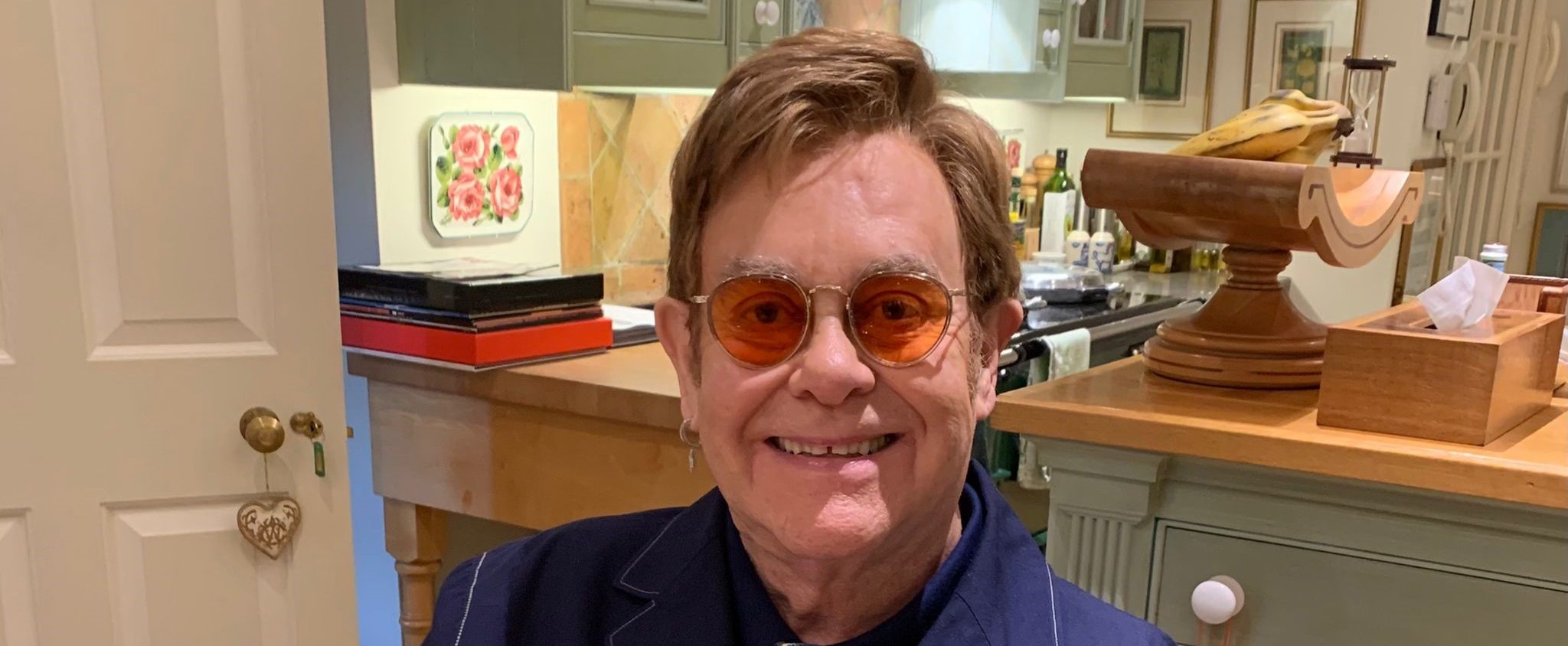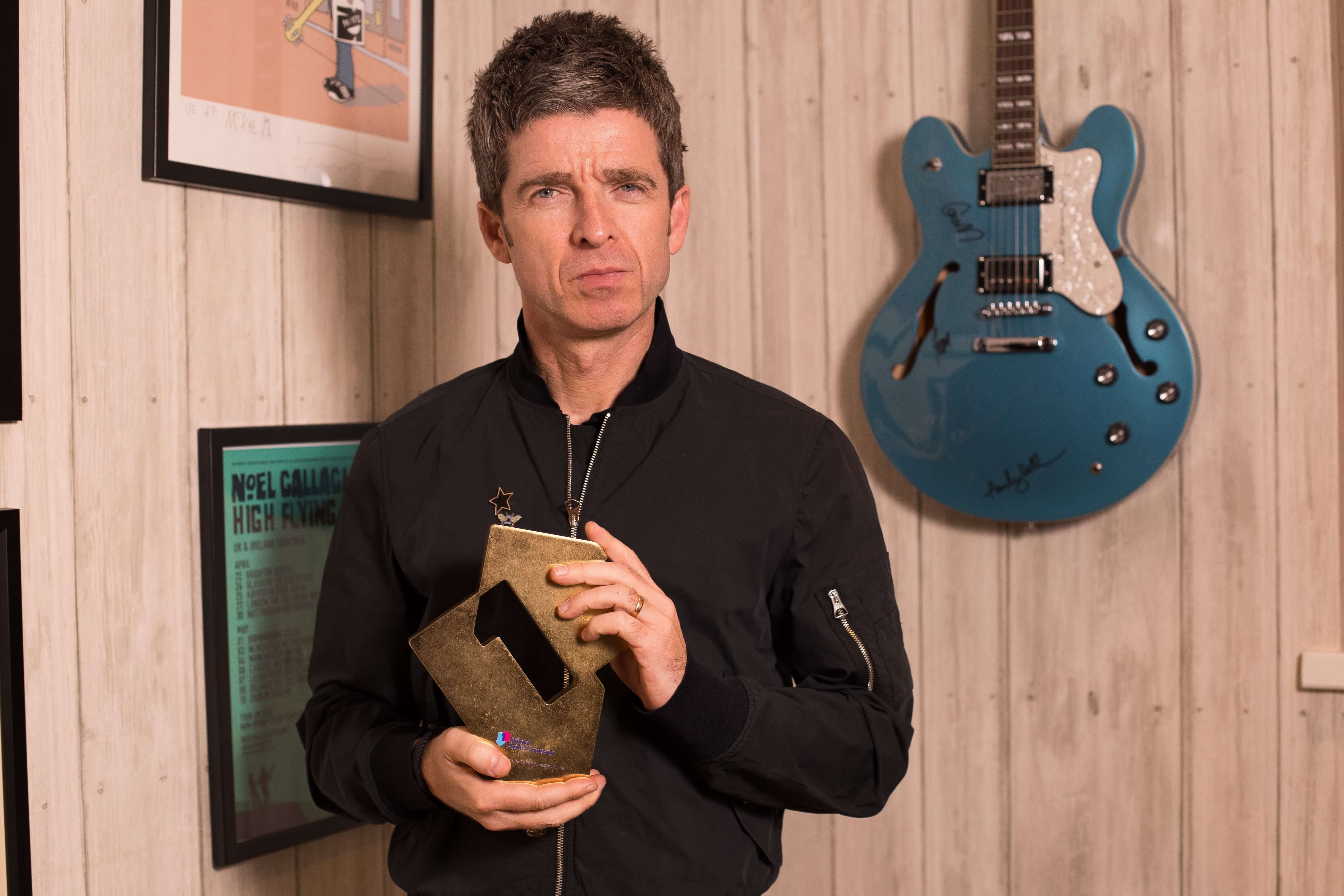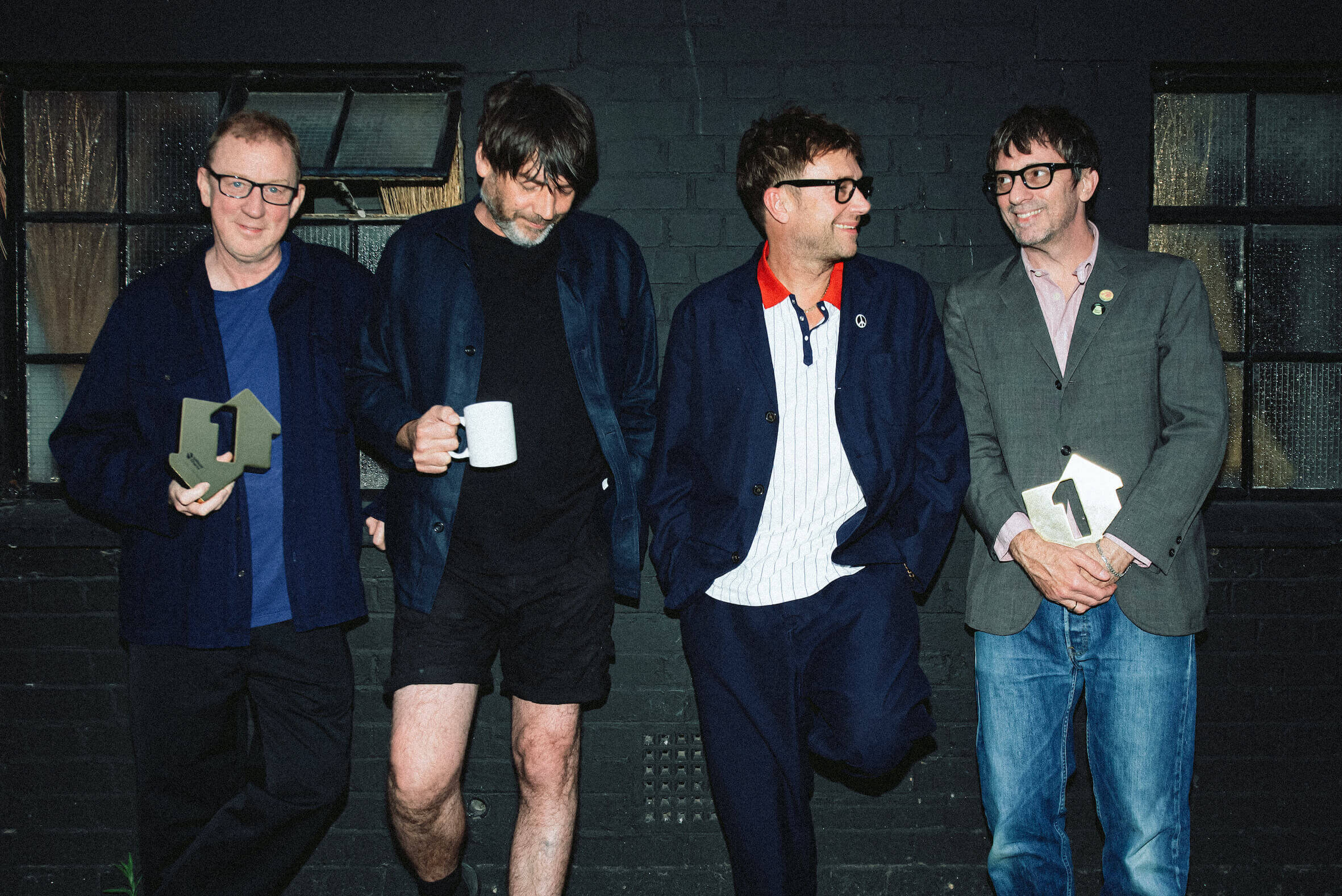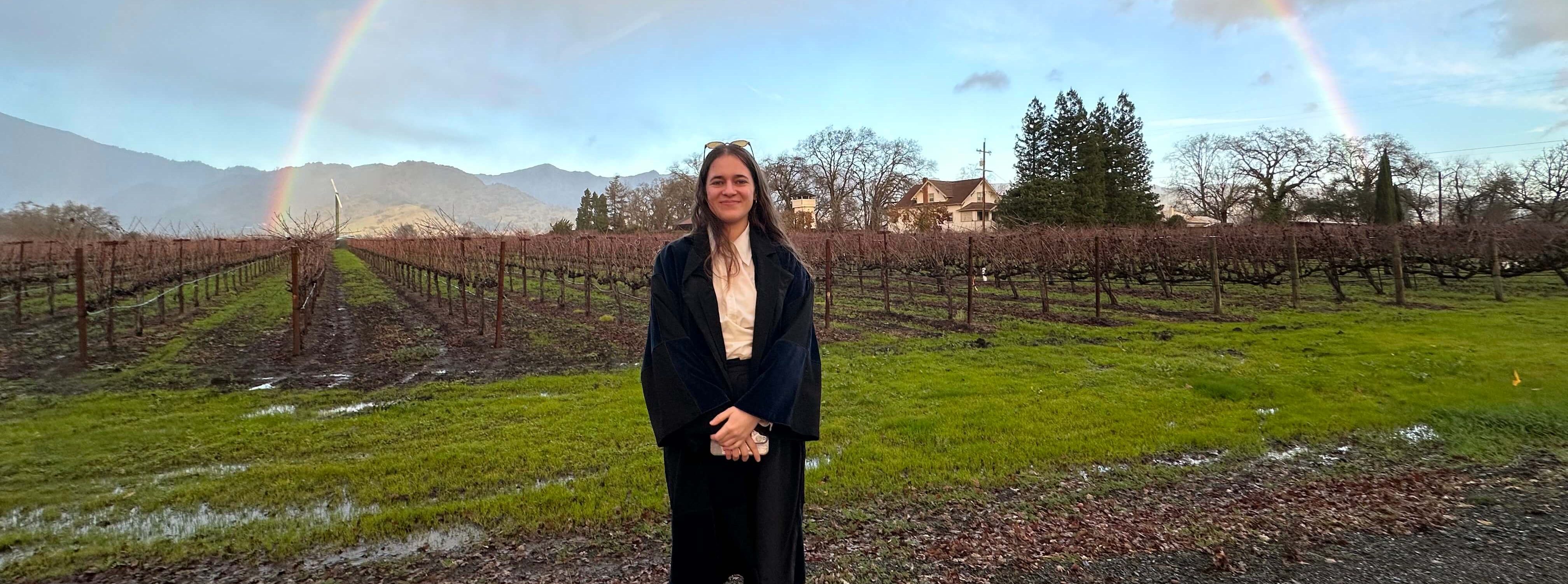Noel Gallagher Official Number 1 Album Award, Who Built The Moon
This Curious Life (TCL). Are the people who are buying music getting older?
Martin Talbot (MT). The answer is quite evidently yes – and the reason for this is the advancing age of the rock & roll era. It was the 70th anniversary of the Official Singles Chart last year, the first singles chart was compiled by the NME in 1952 – that was just before the birth of rock and roll, which started over the following years, 1955’s Rock Around The Clock being the UK’s first million-selling rock & roll record.
As a result, we now have multiple generations of people who grew up in the rock & roll era. This makes nostalgia look vastly different. I’m in my Fifties and, when I was growing up, music from 25 years before was a very different style of music, early Elvis, big band, Vera Lynn, Alma Cogan; in contrast, 25 years back from today we were listening to Britpop, the Spice Girls, Take That… ‘Old’ music feels more contemporary than it used to, if you think about it in those terms.
TCL. Are record companies marketing to older people?
MT. Yes, naturally, because of that much bigger older audience. But it is not new. Record companies have long since recognised the importance of targeting older fans. It began gaining traction in the mid to late 90s, when supermarkets began selling CDs, a shift which allowed artists such as Robson & Jerome to successfully target a more mainstream audience, resulting in a bigger and wider demographic of consumers interested in music.
As a result of this shift and the release of artists targeting the older music fan, album sales hit an all-time peak in the early 2000s – and this has further been reflected by the evolution of the digital music market, including (most recently) streaming services.
"Overall, the shift to streaming has democratised music.... access for all ages." — Martin Talbot
TCL. So, has how we access music changed who listens to it?
Yes. In the past, accessing music meant physically buying albums or CDs, which limited the availability of older or less popular music. For example, if someone wanted to explore the earlier works of an artist like David Bowie, they might have had limited options in their local record shop. But the arrival of streaming services has made vast archives of music easily accessible to anyone with a subscription. Teenagers discovering David Bowie today can instantly access his entire discography, enabling them to explore and appreciate his entire musical journey.
Technology like Amazon’s Echo devices have further revolutionised the way we listen to music, especially for older generations like my 87-year-old mother-in-law. Voice-controlled devices make it effortless for older fans like her to request their favorite songs without having to physically search for CDs or albums. These demographics are often more difficult to convert to new technology, but voice activation has turned that on its head.
While streaming has unlocked a “long tail” of archive music, catering to niche interests and older audiences, there is still a market for physical sales, especially when artists release new music aimed at these older audiences. During the Christmas season, when artists such as Michael Ball, Alfie Boe and Michael Buble target the older market with new albums, physical sales tend to rise.
However, despite the rise of digital music consumption, the resurgence of vinyl is very real. Vinyl records appeal to a diverse range of age groups, including older music enthusiasts who have been collecting vinyl since their teenage years, plus younger audiences, including teenagers and people in their early 20s. Buying vinyl records is not just a way of listening to music, but a way to demonstrate your commitment and appreciation for an artist. Vinyl has become a visible and tangible symbol of a fan’s dedication to the artist, like a form of advertisement for their loyalty.
Overall, the shift to streaming has democratised music access, allowing listeners of all ages to explore an extensive catalogue of music and experience the joy of discovering and rediscovering artists and genres effortlessly.
TCL. Do you think there has been a change in how we connect with music?
MT. Yes. I can even flag an example from the past few months. I was watching Sir Elton John at Glastonbury last month and it brought back memories of the time I bought Elton’s “Captain Fantastic & The Brown Dirt Cowboy” for my dad when it was first released. It suddenly struck me that he was 44 years old at the time. Back then, the idea of my dad, aged 44, going to a festival or attending a gig was simply ridiculous. Older people in the 1960s, 70s, and probably 80s, as well, didn’t expect to enjoy pop music or engage with shows like “Top of the Pops.”
However, there has been shift since then. People born in the rock era have grown up with music as an integral part of their lives. As a result, there is now a generation of music enthusiasts who have always listened to music, which means that new pop music resonates with them much more than it might have done in the past.
TCL. Do you think older people are more knowledgeable about music?
MT. I’m not sure. It is quite common for older music fans to claim that modern pop music isn’t as good as it was “in their day”. And, of course, for people who grew up in the rock & roll era, it is hard to accept that you are not in touch with modern music culture. But, of course, pop music and the charts have always been for younger music fans, they have never been designed for middle aged men, “6 Music dads”, for instance. Pop music isn’t for them. It wasn’t in the Fifties, or Sixties, or Seventies, or Eighties, and it isn’t now. That doesn’t mean there isn’t music for those age groups, but it is different.
And, on top of that, I think we now have a younger generation who are more music literate, more aware of music history and legacy, than any other generation before them. They have unparalleled access to a vast array of music, granting them broader knowledge and more eclectic tastes compared to when we were their age. This transformation in musical availability (and therefore engagement) is an essential reflection of the digital age and the limitless music resources available to the younger generations.
TCL. Do you think we are becoming more accepting of older musicians?
MT. Yes, I think we are. Age seems to be becoming less of a limiting factor for artists in the music industry. We are witnessing a new trend where both older and younger artists coexist. You find a range of ages on the bill of festivals for example.
Kylie Minogue, Official Number 1
The likes of The Rolling Stones, Kylie Minogue, Noel Gallagher, Blur, Bruce Springsteen and Human League are prime examples of acts who continue to thrive creatively and perform at an older age. Kylie’s Las Vegas residency at the age of 55 is a perfect example of her enduring popularity. Similarly, seeing artists like Bruce Springsteen perform at the age of 73 or the Rolling Stones still touring well into their 70s and 80s challenges previous notions of age limitations in the music world. In the past, the idea of artists continuing to perform in their later years was often seen as absurd or even embarrassing. It’s crazy to think it, but I remember some people being sniffy about the Stones still performing live in the early Nineties. Mick Jagger would have been just turning 50 in 1993; he’s 80 now, and still performing.
Perceptions have shifted and people no longer feel that way. Music has become a powerful cultural tool in challenging societal attitudes towards aging and redefining how we perceive getting older.
We are in a new era in the music industry which is showcasing artists of all ages, creating an inclusive and inspiring environment for both young and older musicians alike. — Martin Talbot
TCL. Do you think music has the power to change our view on ageing?
MT. Absolutely. Music has the remarkable ability to shatter stereotypes. We are in a new era in the music industry which is showcasing artists of all ages, creating an inclusive and inspiring environment for both young and older musicians alike.
TCL. Are the charts still important?
MT. (He laughs) We often get asked, usually by middle-aged men, if the charts have lost their relevance. In response, I remind them that the charts were never intended for their age group. The purpose of the charts has always been to reflect popular music and cater to the tastes of the younger generation who actively buy it. Popular music holds just as much significance for young people today as it always has. What has changed is that, in the past, when someone reached the age of 50 in the late 1970s, they wouldn’t be expected to be into pop music.
We have recently conducted a study into the significance of charts in people’s lives. While algorithms initially seemed like a glamorous way to compile personalised music playlists about five years ago, I think we are all now raising questions about their reliability, about whether we want computers and machines to tell us what we like. When we did our research, a lot of the feedback pointed to this change in perception – and suggested that the Official Chart is seen as a “people’s algorithm,” reflecting what individuals genuinely like and are purchasing.
Today, there are many charts, whether from Spotify, Amazon or Apple Music – but the Official Charts are based on data aggregated from all of these sources (and many more) to create a more accurate representation of the true music trends. This approach ensures that we deliver genuine and trustworthy music news based on the collective preferences and choices of music lovers, rather than relying solely on an automated system.
TCL. How important is music for our health and longevity?
MT. You know, it is very important. Probably more than ever, especially given how frenetic our lives are today, how many distractions there are and how little we allow ourselves to reflect and recompress in the modern world.
About a year and a half ago, I attended a course in mental health first aid, which highlighted the importance of dedicating regular time to oneself. As part of this course, we were all told to find an hour to spend doing something solely for our own mental well-being. It was our weekend project. For mine, I made a particular point to sit in a room alone, carefully selecting a vinyl record, placing it on the turntable and allowing the music to wash over me, without doing anything else, without any distractions. Those moments of undisturbed personal time are rare, but immensely powerful. The power of music in supporting mental health is undeniable, I think. In fact, we are currently collaborating with a couple of organisations to explore how the Official Charts from past years and decades can be used to help individuals with a broad spectrum of medical issues, including dementia.
TCL. We must end with this final question of course! Who is the oldest person ever to top the charts?
MT. Well, it isn’t that long ago, which highlights the point about older performers continuing to impact music culture. The overall record is held by Captain Tom Moore, who was 99 when he went to Number 1 during lockdown in 2020 – in fact, he actually turned 100 while he was at the top of the chart, which makes him the only chart-topping centenarian. The oldest woman was Kate Bush, who (of course) went to Number 1 last year, when Running Up That Hill became so popular again after being featured on Stranger Things. She was just a few weeks from her 64th birthday when she went to the top.
Photo by Jonny Gios on Unsplash
TCL. Thank you, Martin, this has been a fascinating conversation. It is heartening to hear that once again music is creating powerful cultural change, like it did 70 years with the birth of rock and roll. That age is no longer a limiting factor, and the power of music continues to transcend generational boundaries, growing a diverse and ever-evolving landscape for music enthusiasts of all ages.



 &
& 







